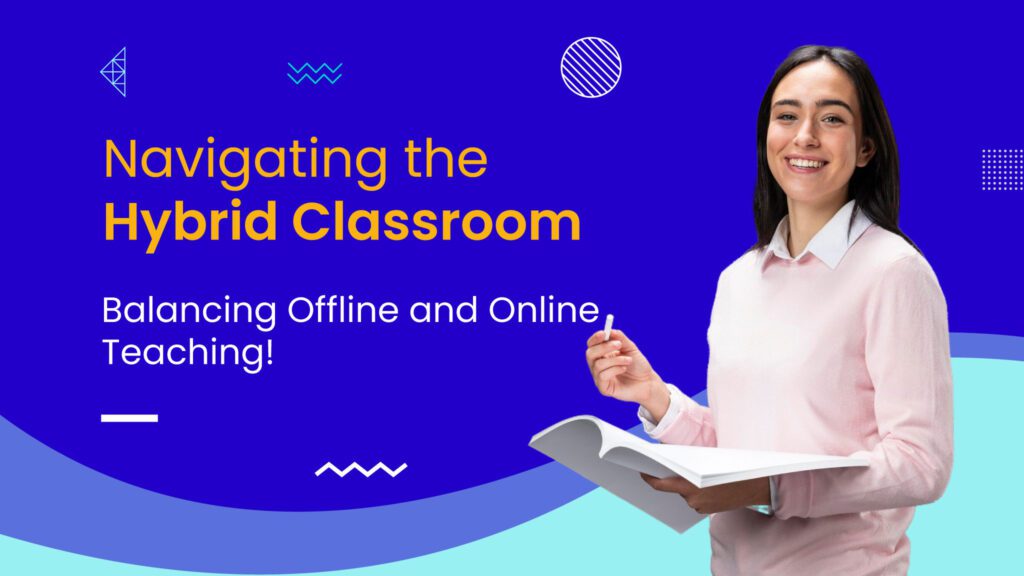
In the evolving landscape of education, the hybrid classroom—where offline (in-person) and online teaching coexist—has become a norm. For teachers, this dual approach offers both opportunities and challenges. Here’s how to effectively manage both modes of teaching and why embracing online teaching more frequently can be beneficial.
Strategies for Balancing Offline and Online Classes
Unified Curriculum Planning
Start with a well-structured curriculum that integrates both online and offline teaching components seamlessly. Design your lessons so that online materials complement and reinforce what is taught in the classroom. For instance, if you’re introducing a new concept in-person, follow up with online resources like videos or interactive quizzes to reinforce teaching.
Leverage Technology for Efficiency
Utilize online tools to streamline administrative tasks. Platforms like Wayvida Teaching platform can help manage assignments, track progress, and communicate with students efficiently, take recorded and live classes and payment gateways and more. This reduces the administrative burden and allows you to focus more on teaching.
Create a Consistent Schedule
Consistency is key in a hybrid model. Set clear schedules for both offline and online components and communicate them effectively to your students. This helps manage expectations and ensures that students are prepared for both modes of instruction.
Engage Students with Interactive Content
To keep students engaged across both formats, use interactive elements in your online classes. Incorporate discussion boards, polls, and live Q&A sessions to make online learning more interactive and less monotonous. For offline classes, consider integrating digital tools and apps to create a blended learning environment.
Provide Clear Instructions
Clearly outline expectations and instructions for both offline and online activities. For instance, if an assignment requires both in-person discussion and online submission, provide detailed guidelines on how to complete each component. This reduces confusion and helps students manage their tasks more effectively.
Balance Screen Time
Be mindful of the amount of screen time students are exposed to. Balance online instruction with offline activities to prevent burnout and promote a healthy learning experience. Incorporate physical activities and group discussions to complement online learning.
Why Embrace Online Teaching More Often?
Flexibility and Accessibility
Online teaching offers unparalleled flexibility. Students can access materials and lessons from anywhere, allowing for a more personalized learning experience. This flexibility is especially valuable for accommodating diverse learning styles and needs.
Enhanced Teaching Tools
Online platforms provide a wealth of resources that can enhance the teaching experience. Interactive simulations, multimedia content, and real-time feedback tools can make lessons more engaging and effective.
Efficient Use of Resources
Online teaching can be cost-effective. Digital resources and tools can reduce the need for physical materials, saving both time and money. Additionally, online assessments can streamline grading and feedback processes.
Global Collaboration Opportunities
The online environment opens doors for collaboration beyond geographical boundaries. Students can engage with peers from different regions and cultures, enriching their learning experience and broadening their perspectives. Online Teaching also provides same opportunity for teachers. Online teachers can grow their online courses and online teaching business beyond boundaries.
Adaptability to Changing Circumstances
In times of unforeseen disruptions—such as natural disasters or health crises—online teaching ensures continuity of education. It allows for a smooth transition from in-person to remote learning, minimizing interruptions to students’ academic progress.
Successfully navigating a hybrid teaching model requires careful planning, clear communication, and a willingness to adapt. By embracing online teaching more frequently, educators can harness the flexibility and innovative tools it offers, creating a more dynamic and inclusive learning environment. As we continue to blend offline and online instruction, the goal is to enhance educational outcomes while catering to the diverse needs of our students. The future of education is here!!
#OnlineTeaching #Wayvida #OnlineTeaching #DistanceLearning #RemoteEducation #VirtualClassroom #Elearning #EdTech #DigitalLearning #OnlineLearning #RemoteTeaching #VirtualLearning #RemoteClassroom #OnlineEducation #TeachOnline #DigitalClassroom #RemoteSchooling #OnlineInstructor #VirtualTeaching #DistanceEd #OnlineLesson #EdChat #wayvida #wayvidaonlineteaching #wayvidaonlinecourse #wayvidacourseselling #wayvidalms #wayvidaedtech #topedtechplatform #toplmsplatform #topedtechtools #drgireeshneyyar #gireeshneyyar
